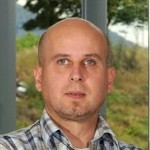
The Laboratory for Statics (still equipping), Laboratory for Hydraulic and Pneumatic Units and equipment at the Laboratory for Design and Laboratory for Forming Processes are used.
Equipment that is used:
The classical theories for thin-walled beams (Timošenko, Vlasov) are based on the assumption that the beam’s cross section remains unchanged. Using that assumption, the displacement and stress analysis for bending and torsion of the beams are relatively simple. But, for thin walled beams, and beams made of orthotropic materials, the cross section distortion could be significant and it could influence stress distribution and its value. The influence of the distortion of the cross sections at the bending and torsion of the beams is of particular interest. The warping of the cross sections due to shear for the bending of isotropic beams is relatively well investigated. The warping is studied to determine its influence on the displacements more than on the stresses. At torsion, the warping of thin walled cross section is included in the Vlasov’s theory of torsion; the warping due to shear is subject of the novel investigations. The studying of the thin walled beams at the complex loading conditions, particularly made of the orthotropic materials, is subject of the most recent investigations, also.
It is planned to continue research in the field of mathematical theory of plasticity of orthotropic materials related to the development of constitutive models by which the plastic anisotropy evolution with ongoing deformation process can be described. Further development and implementation of models based on complex orthotropic stress functions and various algorithms for calculating elasto-plastic state variables is planned. The application of the developed models in prediction and optimization of various sheet metal forming processes is planned, too. For the considered models based on the non-associated flow rule and distortional hardening the derivation of algorithmic consistent tangent module and consideration of plastic flow stability conditions will be performed.
The research will be also focused in the field of control engineering and its application to mechanical systems damage assessment and control. That is common situation when the reliability and efficiency targets are to be attained. The models will be founded on Bayesian methods and stochastic processes, extended with expert opinions and/or previous experience. Such models will be updated with data on main damage processes like fatigue or wear.